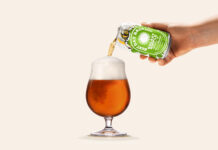
New survey results from Food Processing’s 46th annual R&D survey show that R&D teams are focusing on cleaning up product labels in 2017, ignited by big label changes initially set for 2018, but now delayed, like GMO labeling and the new nutrition fact label.
Here are some of the survey highlights.
Added sugars, GMO ingredients, and sodium are on the chopping block
Most product development teams are cleaning up product labels in response to consumer demand. Topping the list this year are:
- Removing added sugars (33%)
- Removing GMO ingredients (30%)
- Removing sodium (29%)
On the flip side, almost one-quarter of respondents said they’re working to add fruits and vegetables to their products.
New products are coming and existing ones are going clean
In an effort to clean up labels, 42% of product development teams are developing “really new” products compared to 22% that are focused on cleaning up existing products.
An additional 17% of respondents say they’re improving existing products.
Labels are changing in several ways
Mandatory GMO labeling is coming but it’s not clear exactly when the law will be enforced: the final rule hasn’t been issued yet, and it’s behind schedule for the initial July 2018 deadline. Once enforced, the law will require that food products containing genetically modified ingredients be labeled with on-package text, a symbol, or a digital code that shoppers scan via their mobile phone.
Despite delays, product development teams are already working to meet the new requirements. Over a third of R&D teams say they’re seeking non-GMO certification for their products, while 27% are relying on the USDA’s GMO label. Some R&D teams (22%) are only adding “contains GMO ingredients” to labels.
An even smaller group (17%) will use GMA’s SmartLabel QR code as part of the GMA’s SmartLabel Transparency Initiative that allows consumers to scan labels to find out more about the product on their phone or online.
In addition to GMO labeling changes, R&D teams reported clean-label efforts that remove high fructose corn syrup, artificial colors, and nitrates/nitrites from products. Others are adding “No Antibiotics Ever” to product labels as part of their label makeovers — something major U.S. poultry companies are already implementing.
____________________
These results show that despite regulatory delays, food companies are answering the call of consumers, especially Millennials, who are pushing for changes including clean ingredients and brand transparency.







